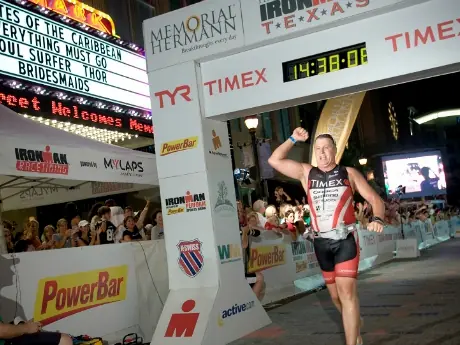
You finish your half iron triathlon and you are now thinking of stepping up to the full Iron distance. But you are not sure about embarking into that journey. How many more hours of training are required? What do I need to keep in mind? This a common and obvious question and below are my thoughts on this matter.
More: Ask A Coach: Are Power Meters Worth It?
How much more training time? Although the distances are doubled on race day it does not mean you have to double the hours of training. My suggestion is to expect the hours to be about 1/3 more but not from the start, only for the last 2 to 3 months . If you are more than 2 to 3 months out from your full Iron you can train about the same as you did for the half iron. The big difference will be your long workouts per sport which should be the staple of Iron distance training. I would go on record saying that you can just add more time and distance to those three long workouts and feel well prepared to complete your Iron distance race. You will of course get better results if you can also train more in other workouts but it is not a deal breaker as far as safely completing the race.
Intensity.
Many people cannot imagine training for longer distances simply because they experience so much discomfort and pain in training for shorter ones that training for longer seems unimaginable. There is a simple solution. Slow down. Training easier allows you to enjoy your workout more and is also essential for Iron distance training. This seems obvious but many people either forget or do not think about this. Even the professional athletes slow way down when training longer and so should everyone.
Recovery.
Training for an Iron distance race will challenge your recovery. Lowering the intensity of the workouts like mentioned above will be important for this. Stay hydrated and get a weekly massage to help. Check your protein intake and make sure it is sufficient. If you find yourself not sleeping well and irritable be careful and take a day off to recover well.
More: Swimming Shoulder Injury Prevention for Triathletes
Strength.
I have always told my athletes that Iron distance racing is first about having endurance with strength in second, having speed being next. Strength plays a big role in being able to maintain good form over long distances. Given that you cannot possibly do training sessions as long as the race distance to see if your body will hold up, strength training will be necessary to help you on race day.
Nutrition.
The 4th sport of triathlon is nutrition and in an Ironman it can easily break your race. An Iron distance race is really an energy equation. You will spend X amount of calories to take your body over the 140.6 miles. The body only has energy for about 2 hours. This means it is up to you to figure out how to consume and absorb enough calories to fuel that effort. Finally if you want to go faster it means you will need more calories to fuel that effort further complicating the equation. Consult your coach or dietician with Iron distance racing experience to help you.
Mindset.
In many ways the mindset of an Iron distance race is very relaxed. The race takes the whole day so there is really no other way of doing it. Concentrate on your pacing, hydration and nutrition and just let the miles go by. The intensity of many of your training sessions will be way higher than any part of an Iron distance race. The difficulty comes in just putting it all three sports back to back for that long. However if at some point you do not feel great or something happens you can recover from it and many people manage to still do well and reach their goals. If you did the training and you have a good handle of hydration and nutrition it is really not that difficult to finish.
More: Training For a T1 Transition
Finally, one thing I found out is that your brain and common sense becomes an ally as much as your athletic genes. Talent plays a much bigger role in shorter races. Be smart and you can manage to have a great race and surprise yourself.
----
Luis Vargas was born in Colombia, attended high school in Puerto Rico and received a Master's of Science from Arizona State University. He has lived in Boulder, Colorado for 24 years. Luis foundedSmartTriathlonTraining.com and is a USA Triathlon certified coach. He has coached triathlon online for 13 years and will be guiding 21 athletes in Kona this October. He was a former collegiate swimmer and soccer player before starting triathlon and competing in the Hawaii Ironman 7 times with a PR of 9:34.








Discuss This Article